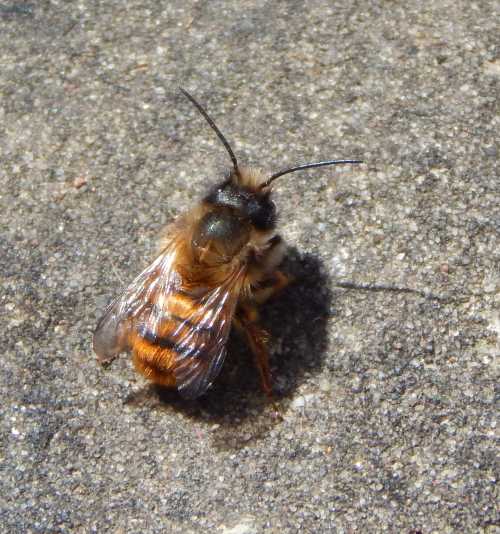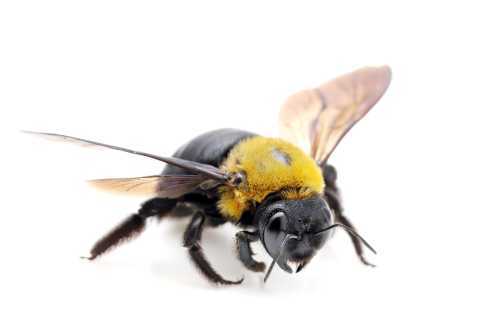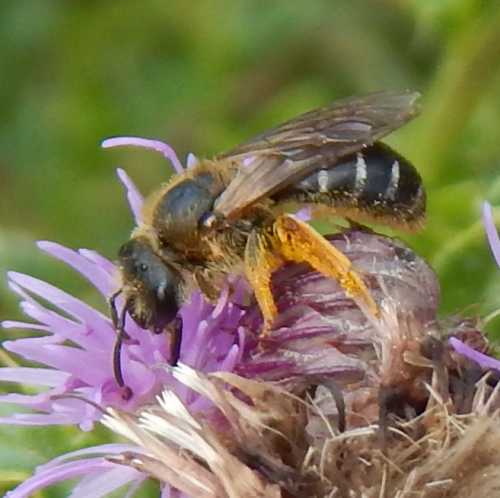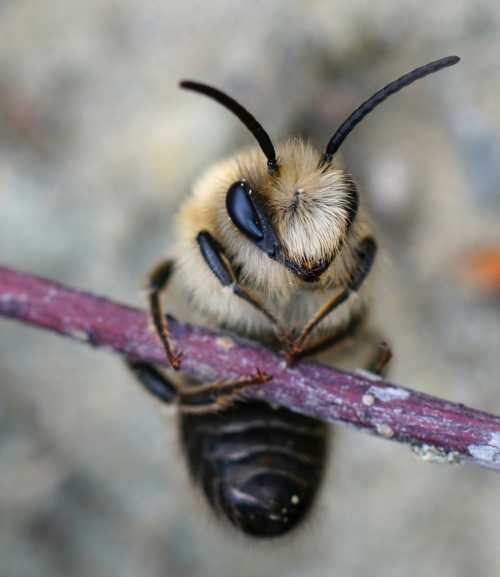Hylaeus - The Amazing Yellow-faced Bees
In the US, Hyleaus are commonly called 'Yellow-faced bees', in the UK they are known as 'Yellow-face bees', whilst in Australia, an alternative name is 'Masked bees'.
Hyleaus are small, fascinating bees belonging to the bee family Colletidae. Not surprisingly, they have distinct white or yellow markings on their faces.
6 Quick Facts About Yellow-faced Bees
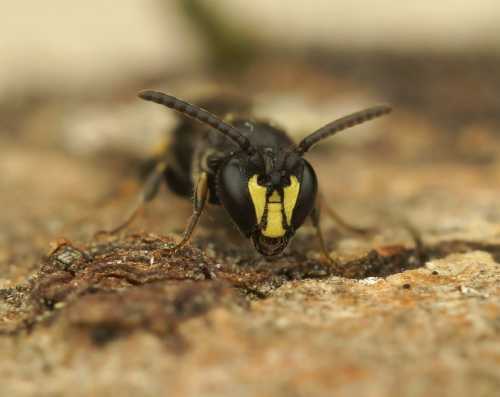 Hylaeus communis - Common-yellow-face-bee
Hylaeus communis - Common-yellow-face-bee- Yellow-faced bees are found around the world. Some resources state there are 500 described species1 whilst others assert there are 700 identified species2.
- There are approximately 50 species on mainland North America2, whilst 12 species are found in the UK1.
- Hylaeus means 'of the woods' referring to a preference for nesting in woody materials2.
- Female Hylaeus don't have scopa for collecting and transporting pollen, and instead regurgitate food they have consumed and stored in their crops back at the nest2.
- Hylaeus line their nests with a very strong, protective silk-like substance which they paint on the inside of the nest with their tongues.
- There are 63 Yellow-faced bee species in Hawaii3. Yellow-faced bees are the only bees native to Hawaii, and the species found on the island are found nowhere else in the world2.
Yellow-face Bees - Identification
With distinctive white or yellow markings on the face, these small, beautiful bees may be relatively easy to identify, although Falk1 notes the facial markings of some species may not always be clear in females.
Yellow-face bees are small, slender and 3.5 - 6mm in length1. Their bodies are dark and relatively hairless.
Yellow-faced Bee Life Cycle, Nesting And Habitat
Hylaeus select nest sites in hollow twigs and stems, holes in wood, and sometimes bee hotels. They will sometimes select crevices and holes in rocks and walls. Having dainty mandibles (jaws), they are unable to excavate their own nest holes, and so they opt for pre-existing holes2.
Hylaeus use their tongues to line their nests with a cellophane or silk-like substance, which provides protection from bacteria and is waterproof. Remarkably, this silk-like substance is so strong, it does not dissolve when infused with strong chemical solvents, and does not melt when heated2.
Watch this amazing video footage below of the life cycle of a Hylaeus communis (Common Yellow-face Bee) as she mates, forages for food, creates the silky lining for her nest cells, and the larvae develop into adult bees inside the silk-lined cells.
Hylaeus can be found in a range of habitats, from urban gardens to forest edges, coastal regions and brownfield sites.
What Do Yellow-faced Bees Eat?
Foraging Habits And Preferences
Wilson and Messenger Carril note that female Hyleaus species are unique in having no hairs or scopa for carrying pollen.
Instead, yellow-faced bees consume the nectar and pollen they find in flowers, store it in their crops, and regurgitate it back at the nest2 to provide food for emerging offspring.
It appears most species are generalists, and have been observed to visit a wide array of flowers, including brambles, Field Scabious, Wild carrot, thistles, Yarrow, roses and Oxeye Daisy.
In Australia, some Masked bee species may visit flowers from only one plant family, and in other regions, species only visiting flowers from the rose family have been noted2.
Hylaeus species have been observed to engage in 'pollen robbery', whereby pollen reward is accessed and removed from the flower by the bee, without pollinating the flower. Bees were noted to achieve this by biting into the closed flowers to access the pollen, before the flower opened out and exposed the pollen naturally4.
Rare And Endangered Yellow-faced Bee Species
In Hawaii, populations of Yellow-faced bees have been devastated by invasive ants. The majority of Hawaiian yellow-faced bees have experienced significant declines in range and population, and some species are now protected3.
Which Hawaiian yellow-faced bees are protected?
In 2016, seven species received federal protection under the Endangered Species Act of 19733, including:
- Anthricinan yellow-faced bee (Hylaeus anthracinus)
- Assimulans yellow-faced bee (Hylaeus assimulans),
- Hilaris yellow-faced bee (Hylaeus hilaris)
- Easy yellow-faced bee (Hylaeus facilis)
- Hylaeus kuakea
- Hylaeus mana
- Hylaeus longiceps
Here is a short video: The Hawaiian Yellow-Faced Bee Project
Yellow-face Bees found in the UK
As I write, according to Falk1 the 12 UK species include:
Hylaeus cornutus (Spined Hylaeus)
Hylaeus dilatatus (Chalk Yellow-face Bee)
Hylaeus hyalinatus (Hairy Yellow-face Bee)
Hylaeus incongruus (White-lipped Yellow-face Bee)
Hylaeus pectoralis (Reed Yellow-face Bee)
Hylaeus pictipes (Little Yellow-face Bee)
Hylaeus punctulatissimus (Onion Yellow-face Bee)
Hylaeus signatus (Mignonette Yellow-face Bee)
Hylaeus brevicornis (Short-horned Yellow-face Bee)
Hylaeus communis (Common Yellow-face Bee)
Hylaeus confusus (White-jawed Yellow-face Bee)
Hylaeus annularis (Shingle Yellow-face Bee)
Do Yellow-faced Bees Sting?
Whilst yellow-faced bees are able to sting, they are not aggressive. I have no experience of a sting from this species personally, but anecdotally I am told a sting from this species is quite rare and not very painful.
This species was not featured in research investigating a comparison of pain levels from stings.
References
- Field Guide to Bees Of Great Britain And Ireland by Steven Falk.
- The Bees In Your Backyard - A Guide To North America's Bees by Joseph S Wilson and Olivia Messenger Carril.
- https://governor.hawaii.gov/
- Bernhard Jacobi, Marc Newman (2012): Pollen collecting behaviour of the hylaeine bees Hylaeus (Hylaeteron) douglasi Michener, 1965 and H. (Hylaeteron) riekianus Houston, 1981 (Colletidae, Hylaeinae) on Grevillea-species (Proteaceae) in Western Australia. – Bembix - Zeitschrift für Hymenopterologie – 33: 8 - 18.
If you found this page helpful or interesting, I'd really be grateful if you would share it with others - if not this page, perhaps another, such as Gardening For Bees.
Thank you so much :) .
